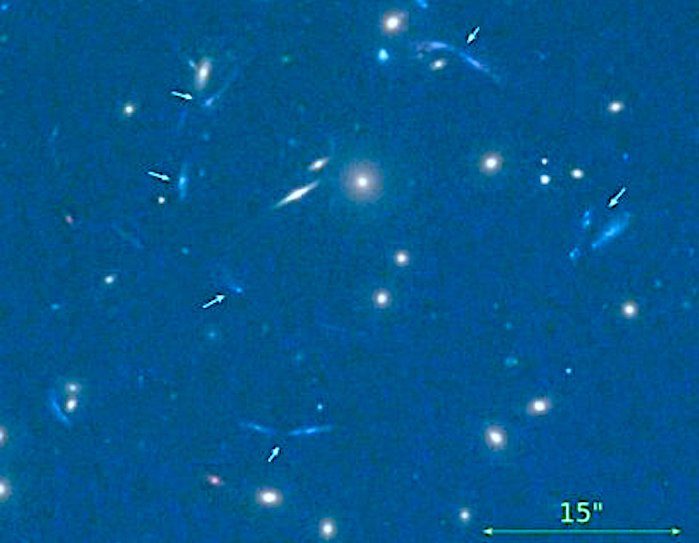
Using this effect, a team of scientists from the Instituto de Astrofisica de Canarias (IAC) led by researcher Anastasio Díaz-Sánches of the Polytechnic University of Cartagena (UPT) has discovered a very distant galaxy, some 10 thousand million light years away, about a thousand times brighter than the Milky Way. It is the brightest of the submillimetre galaxies, called this because of their very strong emission in the far infrared. To measure it they used the Gran Telescopio Canarias (GTC) at the Roque de los Muchachos Observatory (Garafía, La Palma).
"Thanks to the gravitational lens" notes Anastasio Díaz Sánchez, a researcher at the UPCT and first author of the article "produced by a cluster of galaxies between ourselves and the source, which acts as if it was a telescope, the galaxy appears 11 times bigger and brighter than it really is, and appears as several images on an arc centered on the densest part of the cluster, which is known as an "Einstein Ring." The advantage of this kind of amplification is that it does not distort the spectral properties of the light, which can be studied for these very distant objects as if they were much nearer."To find this galaxies, whose discovery was recently published in an article in the Astrophysical Journal Letters, a search of the whole sky was carried out, combining the data bases of the satellites WISE (NASA) and Planck (ESA) in order to identify the brightest submillimetre galaxies. Its light, amplified by a much nearer galaxy cluster acting as a lens, forms an image which appears much bigger than it should, and thanks to this effect they could characterize its nature and properties spectroscopically using the GTC.
Forming stars at high velocity
The galaxy is notable for having a high rate of star formation. It is forming stars at a rate of 1000 solar masses per year, compared to the Milky Way which is forming stars at a rate of some twice a solar mass per year. Susana Iglesias-Groth, an IAC astrophysicist and a co-author of the article, adds.
"This type of objects harbour the most powerful star forming regions known in the universe. The next step will be to study their molecular content."The fact that the galaxy is so bright, its light is gravitationally amplifed, and has multiple images allows us to look into its internal properties, which would otherwise not be possible with such distant galaxies.
"In the future we will be able to make more detailed studies of its star formation using interferometers such ast the Northern Extended Millimeter Array (NOEMA/IRAM), in France, and the Atacama Large Millimeter Array (ALMA), in Chile" concludes IAC researcher Helmut Dannerbauer, who is another contributor to this discovery.



Reader Comments
to our Newsletter